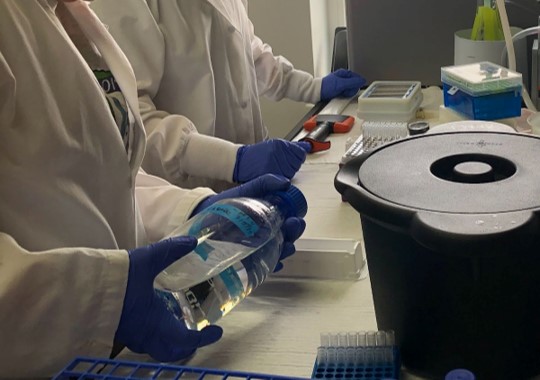Shellfish are a culturally important marine resource throughout coastal Alaska, and many communities harvest them for subsistence. However, with the threat of harmful algal bloom (HAB) toxins that can accumulate in shellfish, health risks from consuming contaminated shellfish are a growing concern. NOAA’s National Centers for Coastal Ocean Science (NCCOS) and partners are working with organizations and groups in Alaska to provide resources and knowledge needed for the detection of saxitoxins, powerful neurotoxins that can result in potentially life-threatening Paralytic Shellfish Poisoning (PSP) in humans and wildlife.

Through a Cooperative Research and Development Agreement, NCCOS, Ocean and Earth Environmental Services, and the Chugach Regional Resources Commission (CRRC) recently conducted a week-long training and capacity development workshop at CRRC’s Alutiiq Pride Marine Institute in Seward, Alaska. NCCOS and Ocean and Earth Environmental Services led CRRC environmental science staff through the process to set up and implement the saxitoxin receptor binding assay in their laboratory. Originally developed by NCCOS, the receptor binding assay is a testing method that uses cellular action to measure the total toxicity of the shellfish sample from the mixture of all saxitoxins that can be present in contaminated samples. Measuring the overall toxicity using the receptor binding assay is a relatively simple way to ensure the shellfish is safe to eat. This is one of three methods, and the only in vitro approach, for testing PSP that is recognized in the FDA’s National Shellfish Sanitation Program.
Communities that are members of the CRRC-led regional ocean monitoring program will use the data they collect from the laboratory tests to support harvest decisions. This program was modeled after the successful Southeast Alaska Tribal Ocean Research (SEATOR) project initiated in 2013, where NCCOS transferred Food and Drug Administration-approved toxin testing methods to local tribes.
Ongoing information sharing aims to reduce HAB risks and support the safety of traditional or subsistence harvesting of shellfish. The CRRC is made up of the Agdaagux Tribe of King Cove, Port Graham Community, Nanwalek Native Community, Norton Sound Health Corporation, Prince William Sound Stewardship Foundation, and Prince William Sound College.
